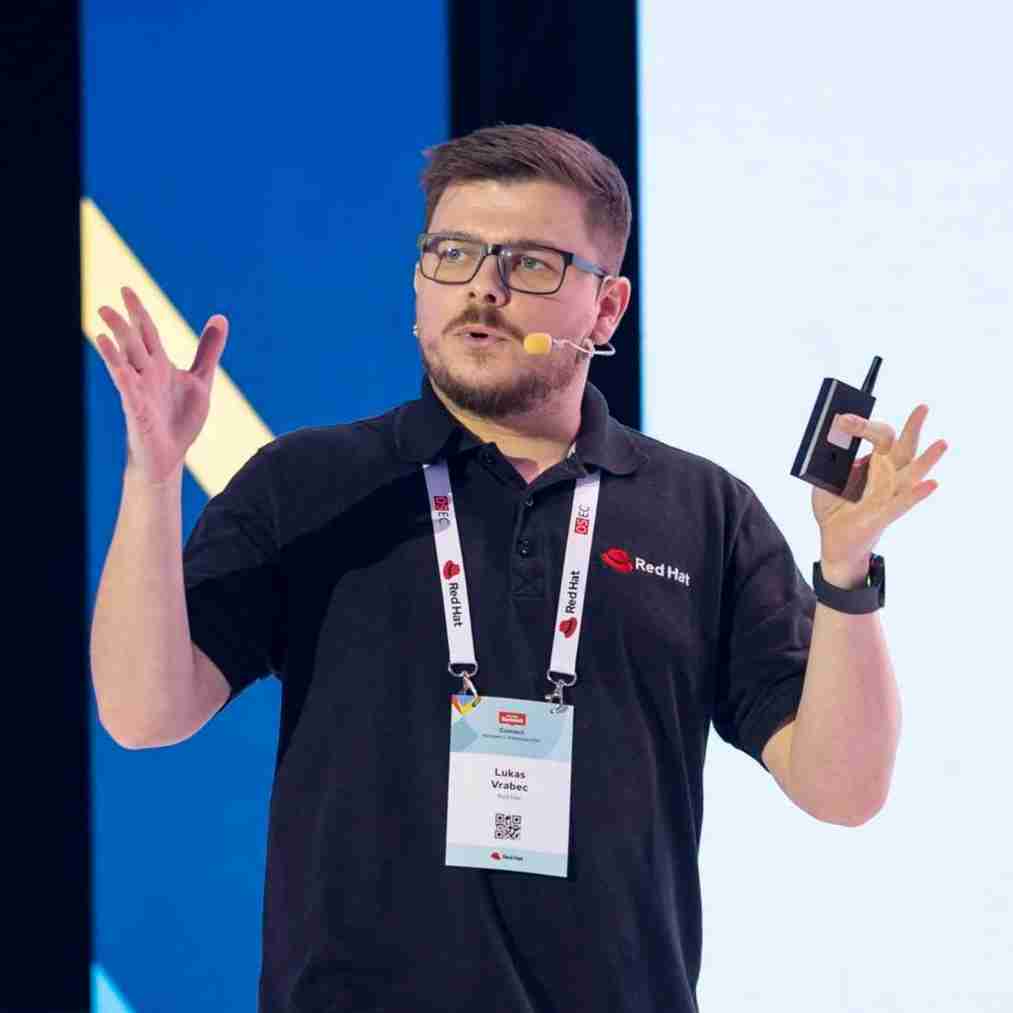Fortify your organization's security posture by joining our exclusive virtual Linux Security Symposium. This event features six in-depth sessions, offering invaluable insights from leading experts on the evolving Linux security landscape.
This symposium provides practical discussions, expert guidance, and live demos to help you make informed decisions, mitigate risks, and strengthen your overall security posture.
Can't make it for the full event? Check out the session times and tune in for the sessions you're most interested in!
 21 August, 2025 09:00 am
21 August, 2025 09:00 am
Vincent Danen
Vice President, Product Security, Red Hat

Jamie Manuel
Principal Product Marketing Manager, RHEL, Red Hat

Join us for an insightful conversation with Vincent Danen, Red Hat’s Vice President of Product Security. We’ll start with a behind the scenes look at some of the work that his team does to mitigate risks and identify new threats. Then, Vincent will dispel some of the common misconceptions and delve into the CVE (Common Vulnerabilities and Exposures) landscape and its impact on the evolution of risk management in software. The session will conclude with a practical discussion centered on common security oversights to take into account when determining whether to go it alone with a self-serve model versus leveraging a subscription service for supporting your organization’s operating systems.
Don't miss this opportunity to gain invaluable insights from a leading expert in product security that can help you make informed decisions that align with your organization's security posture and operational needs.
 21 August, 2025 09:25 am
21 August, 2025 09:25 am
Mike Ralph
Principal Technical Account Manager, Red Hat

Brandon Traffanstedt
Field Chief Technology Officer, CyberArk

Identity Management stands as a cornerstone of any robust cybersecurity strategy. The challenge of effectively controlling user access and their associated privileges is frequently compounded by the fragmented data silos prevalent in most enterprise environments. In this session, identity experts from CyberArk and Red Hat will explore how integration between CyberArk Identity Bridge and Red Hat Enterprise Linux can streamline identity management, enhance security, and reduce operational overhead.
Attendees will learn how this powerful combination enables consistent enforcement of security policies, least privilege, and supports strong, phishing-resistant multi-factor authentication and passwordless options. Join us to discover how to simplify deployment, improve visibility, and strengthen your security posture with CyberArk and Red Hat.
 21 August, 2025 09:50 am
21 August, 2025 09:50 am
Stephen Wilson
Architect, Red Hat

Jamie Manuel
Principal Product Marketing Manager, RHEL, Red Hat

Red Hat Professional Services (RHPS) has spent the last couple decades assisting numerous organizations in implementing and managing the powerful security features and tools offered by RHEL. This session will feature an interview with Red Hat Architect Stephen Wilson discussing capabilities that they feel provide the most significant value for customers seeking to enhance security and efficiency. The presentation will include real-world anecdotes emphasizing the importance of tailoring solutions to specific organizational requirements, along with best practices Stephen has seen first-hand for successful implementation and ongoing management.
 21 August, 2025 10:15 am
21 August, 2025 10:15 am
 21 August, 2025 10:30 am
21 August, 2025 10:30 am
Karl Abbott
Senior Product Manager, Microsoft

Ben Breard
Senior Principal Product Manager, RHEL, Red Hat

Modern-day workloads built with containers and application services and running on large-scale compute platforms such as Microsoft Azure can greatly reduce your need to manage compute resources, patching cycles, security events, and more. But what do you do with all of your workloads that haven't shifted to this paradigm? In this session, product managers from Microsoft and Red Hat will team up to show how to use image mode in Red Hat Enterprise Linux (RHEL) 10 to help migrate your legacy workloads to Microsoft Azure. Attendees will also learn about the unique security benefits of running your RHEL-based workloads on Azure.
 21 August, 2025 10:55 am
21 August, 2025 10:55 am
Amy Ralph
Principal Product Manager – Technical, Red Hat

Jamie Manuel
Principal Product Marketing Manager, RHEL, Red Hat

Quantum computing presents an imminent cybersecurity frontier. As quantum capabilities advance, current cryptographic algorithms face an unprecedented challenge. Post-quantum cryptography offers encryption methods designed to resist attacks from quantum computers. For organizations using Red Hat Enterprise Linux (RHEL), proactively embracing post-quantum cryptography is crucial for future data protection, as present security measures may soon become obsolete.
Preparing for a post-quantum era is no longer optional but imperative. RHEL 10 is stepping up to integrate these revolutionary algorithms into its framework. In this session we'll dig into how we are poised to transform our approach toward cryptography in RHEL, and how you can approach adapting your environment to this new cryptographic reality. With mandated timelines for adoption, it is more critical than ever to be ready to adapt to these new challenges.
 21 August, 2025 11:20 am
21 August, 2025 11:20 am
Amy Ralph
Principal Product Manager – Technical, Red Hat

Lukas Vrabec
Red Hat

James Huang
Red Hat Enterprise Linux (RHEL)

Artificial intelligence (AI) has exploded in the market over the last couple of years. While exciting, there are some key considerations organizations should address in order to safely use AI in their enterprise environment. In this session, Red Hat experts will discuss important aspects that address trust and security around data sovereignty, confidentiality, attestation of secure software builds of materials, and more. Learn how confidential computing can protect data in use, a specific use case that is extremely important for AI workloads. Join us to see how you can take advantage of the benefits of AI, while mitigating risk and maintaining compliance.










In addition to prizes for our top scorers, earn 5,000+ points to unlock your ticket into our raffle for a chance to win one of 5 grand prizes.

Red Hat Eco Parkside 2.0 Backpacks

Red Hat Brumate Tumblers
At each of our six event sessions, one standout attendee will win a Red Hat backpack for asking the top question or comment